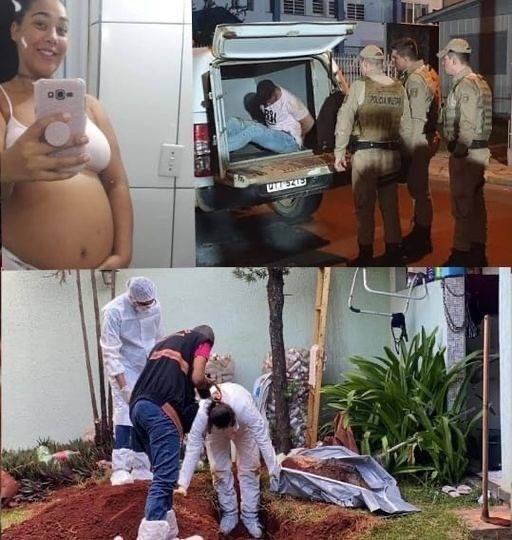
Over the past two days, Brazil has been shaken by a case so unusual and horrifying that it has quickly spread across social media and national news outlets. What began as the mysterious disappearance of a 15-year-old girl in Lucas do Rio Verde, a city in the state of Mato Grosso, has spiraled into a tragedy that left the entire country stunned.
The story captured national attention not only because of the young victim’s age but also because of the shocking discovery surrounding her disappearance. When the details came to light, they revealed a chain of events so grim and unexpected that even investigators were left speechless.
At first, the disappearance of the young girl was thought to be tied to drugs. According to initial speculation, she may have become entangled with the wrong crowd, placing herself in a dangerous environment that led to her vanishing. Rumors swirled in the community, and family members clung to hope while investigators scrambled to find answers.
But the truth turned out to be something entirely different—and even more disturbing.
Authorities began searching intensively after family members reported that the girl had not returned home and was not responding to calls. The search teams scoured wooded areas, streams, and abandoned properties. For a while, the case seemed like many others—tragically common in areas plagued by crime and trafficking. But then came the breakthrough.
When locals in a rural zone of Lucas do Rio Verde stumbled upon evidence, authorities were alerted. What they discovered was devastating. The young girl’s body had been found under shocking circumstances—her abdomen had been torn open, and forensic examinations revealed the unimaginable.
The details were so graphic that they shocked even seasoned investigators. While early reports linked the case to drug involvement, what forensic teams uncovered suggested something far more disturbing. The nature of her wounds led experts to believe she had fallen victim to a predatory attack.
At first, rumors online exploded with wild theories—some suggesting ritualistic violence, others pointing to human cruelty linked with trafficking. However, what investigators confirmed in their preliminary findings suggested an even rarer and more horrifying possibility: the young girl may have been attacked by a wild animal.
In Mato Grosso, an area known for its mix of rural farmland and wild habitats, such attacks are not common but not unheard of. Large predators such as caimans, jaguars, and massive snakes like anacondas still roam in isolated zones. Forensic analysis suggested that part of her abdomen showed signs consistent with an animal attack rather than a knife or man-made weapon.
The possibility that a snake, potentially a python or anaconda, had swallowed part of her body became one of the theories circulating among specialists. This would explain why, at first, there was so little trace of her body. The horrifying idea that a wild reptile could have killed and partially consumed a young girl shocked the community to its core.
Neighbors and community members, horrified by the incident, gathered in vigils to honor the young girl’s memory. “She was only 15. She had her whole life ahead of her,” said one family member, their voice breaking with emotion. Social media filled with hashtags, tributes, and demands for answers.
Forensic specialists and environmental authorities were called in to further analyze the case. Whether this was purely a tragic accident involving wildlife or something more sinister involving humans exploiting the situation remains under investigation.
Regardless of the cause, the story has triggered a wave of fear and reflection in the community. Parents are more cautious than ever, warning their children not to wander into rural areas alone. Authorities are reinforcing safety campaigns in Lucas do Rio Verde and neighboring towns to prevent further tragedies.
This case also raises important questions about the intersection of human activity and wildlife in regions like Mato Grosso. Expanding agriculture and deforestation are pushing people closer to wild habitats, and with that comes an increase in encounters with dangerous animals. Forensic ecologists point out that human-wildlife conflict is an underreported but growing issue in Brazil.
At the same time, criminologists are not ruling out foul play. They argue that while the evidence may point to an animal, it is also possible that her death involved human violence, with the body later tampered with to mislead investigators. Final forensic results are expected to provide clarity, but for now, speculation continues to fuel public debate.
What remains undisputed is the tragic loss of a young life, cut short in the most horrifying way. Her funeral drew hundreds of mourners who came to show support for her grieving family. Many of them carried candles, flowers, and messages calling for justice and safety for children in vulnerable communities.
The tragedy in Lucas do Rio Verde has left an unforgettable scar on the people of Mato Grosso. What began as whispers of a disappearance evolved into a national conversation about violence, wildlife danger, and the safety of children in Brazil.
As one mourner at the vigil put it: “She should have been safe. She should have had a future. Instead, we are left with fear and questions.”
The final outcome of the investigation is still pending, but one thing is certain—the memory of the 15-year-old girl will not fade, and her case will continue to resonate as a reminder of how fragile and precious life truly is.
